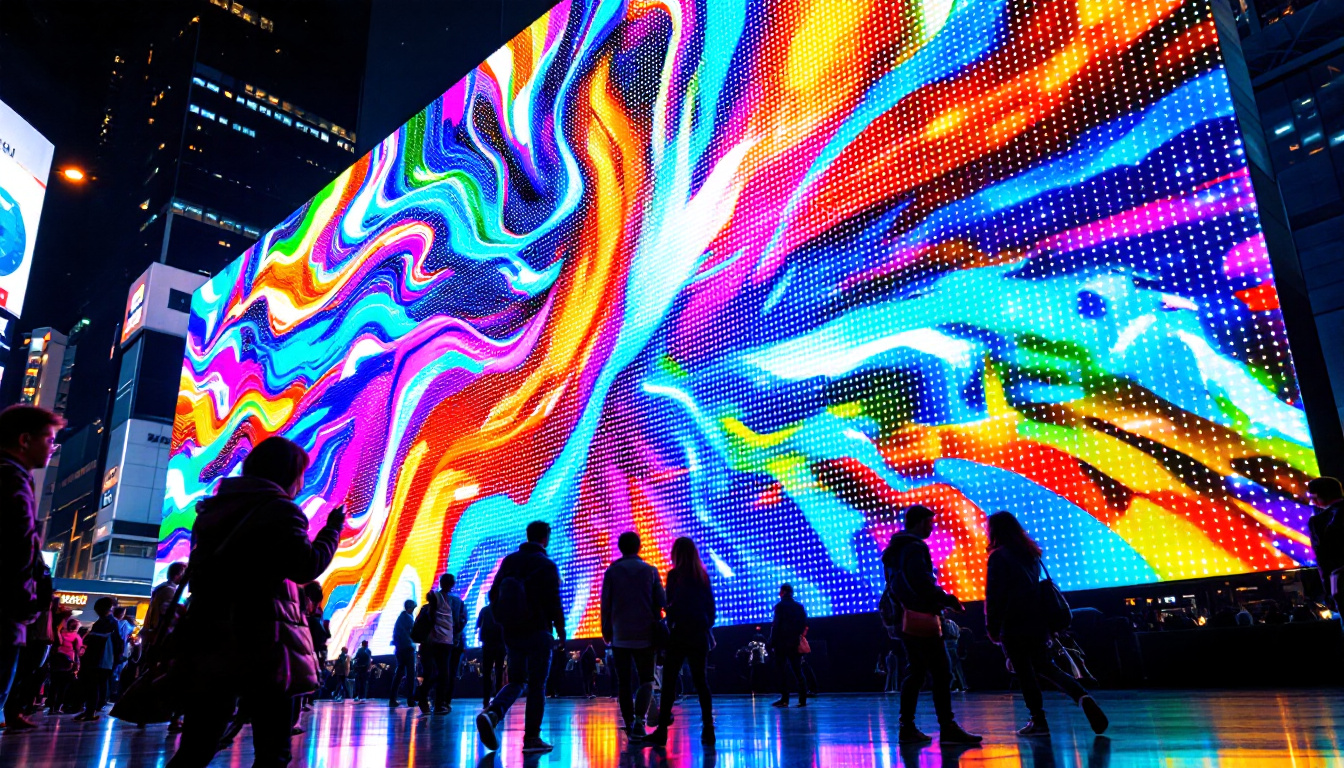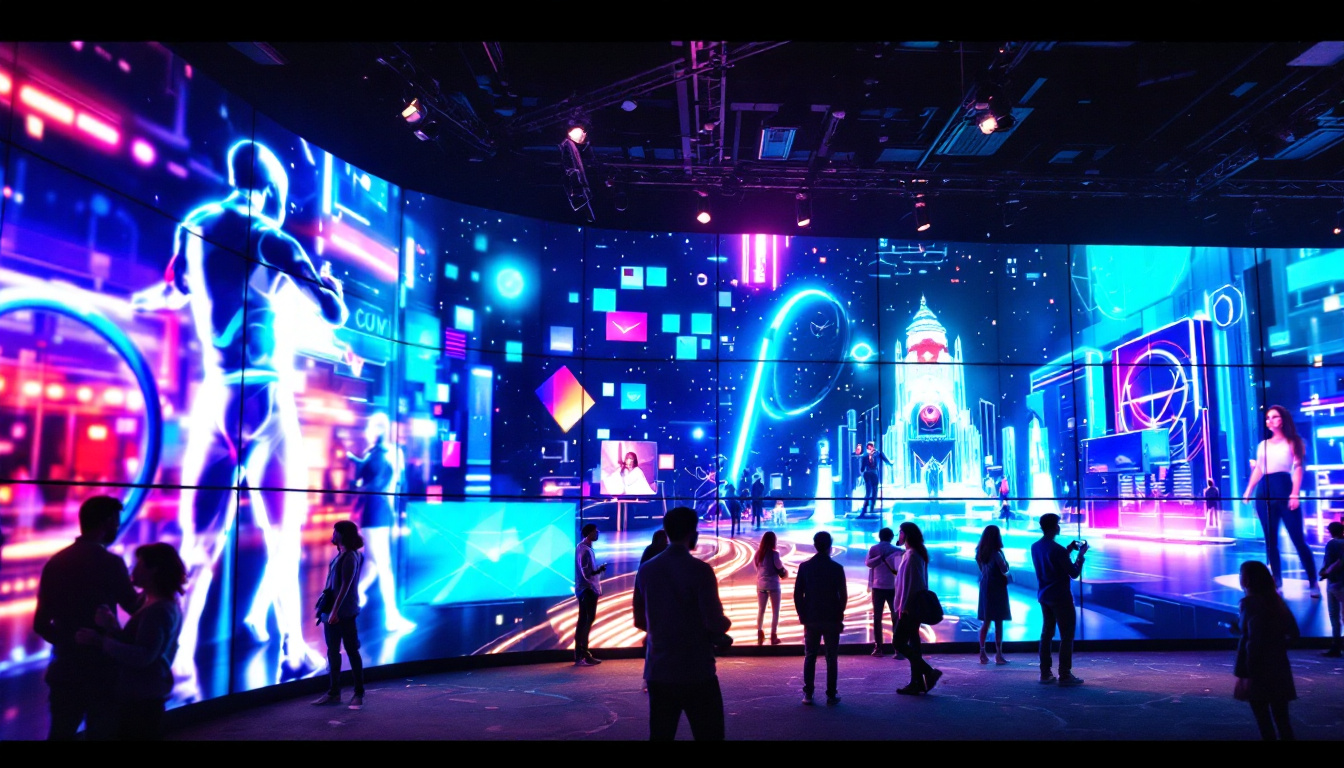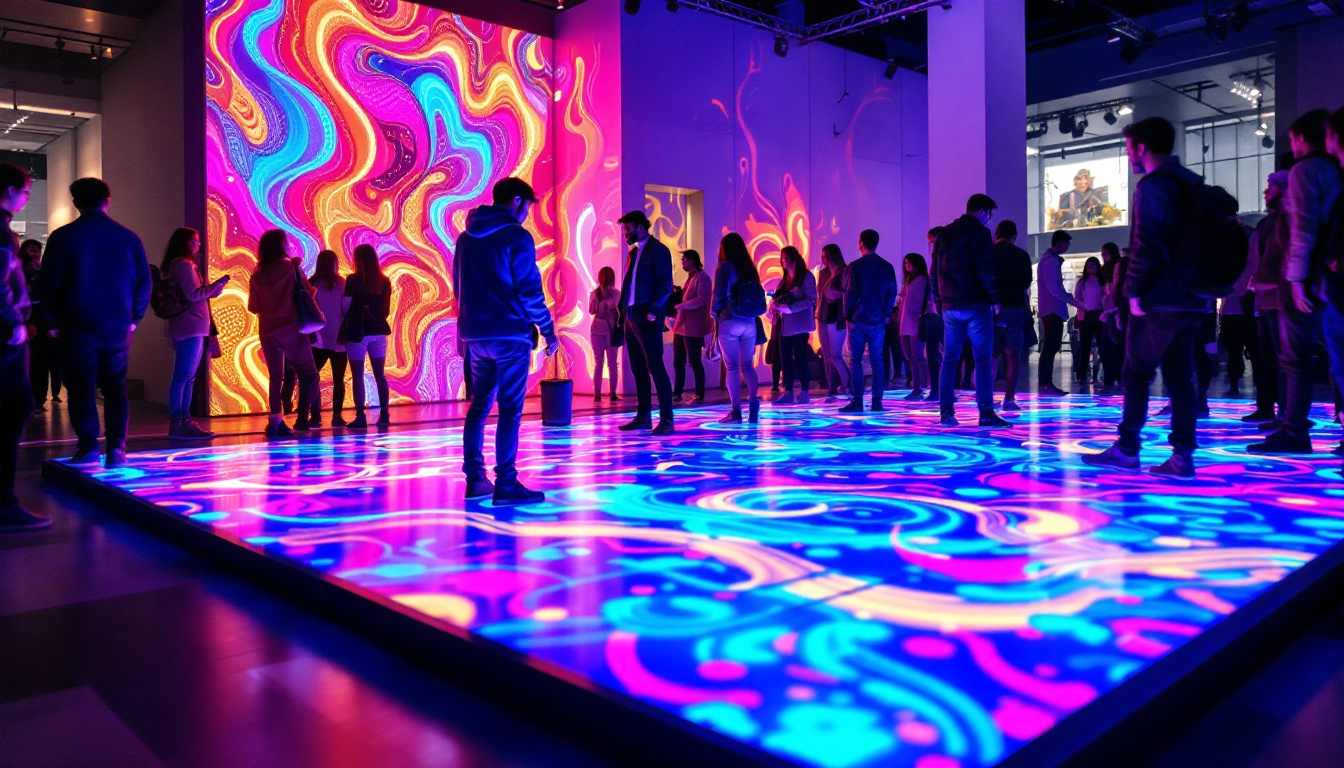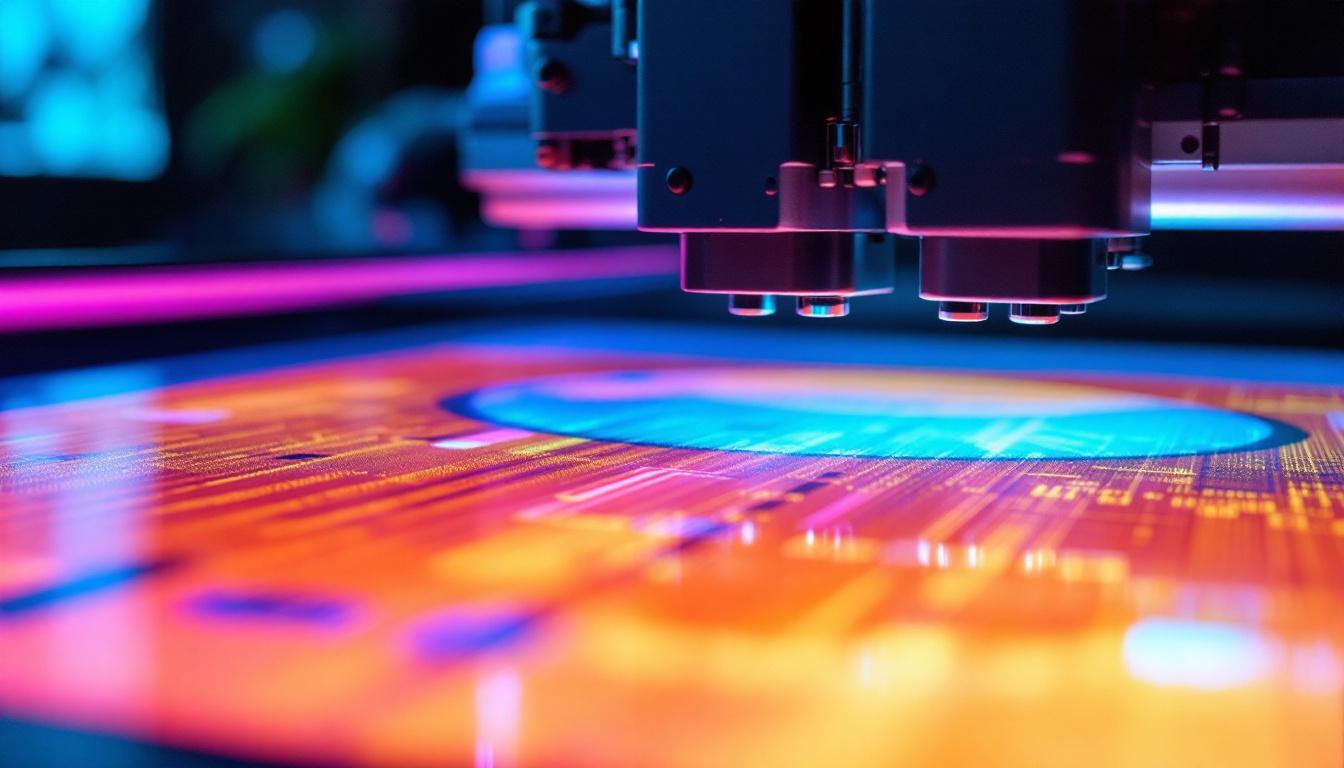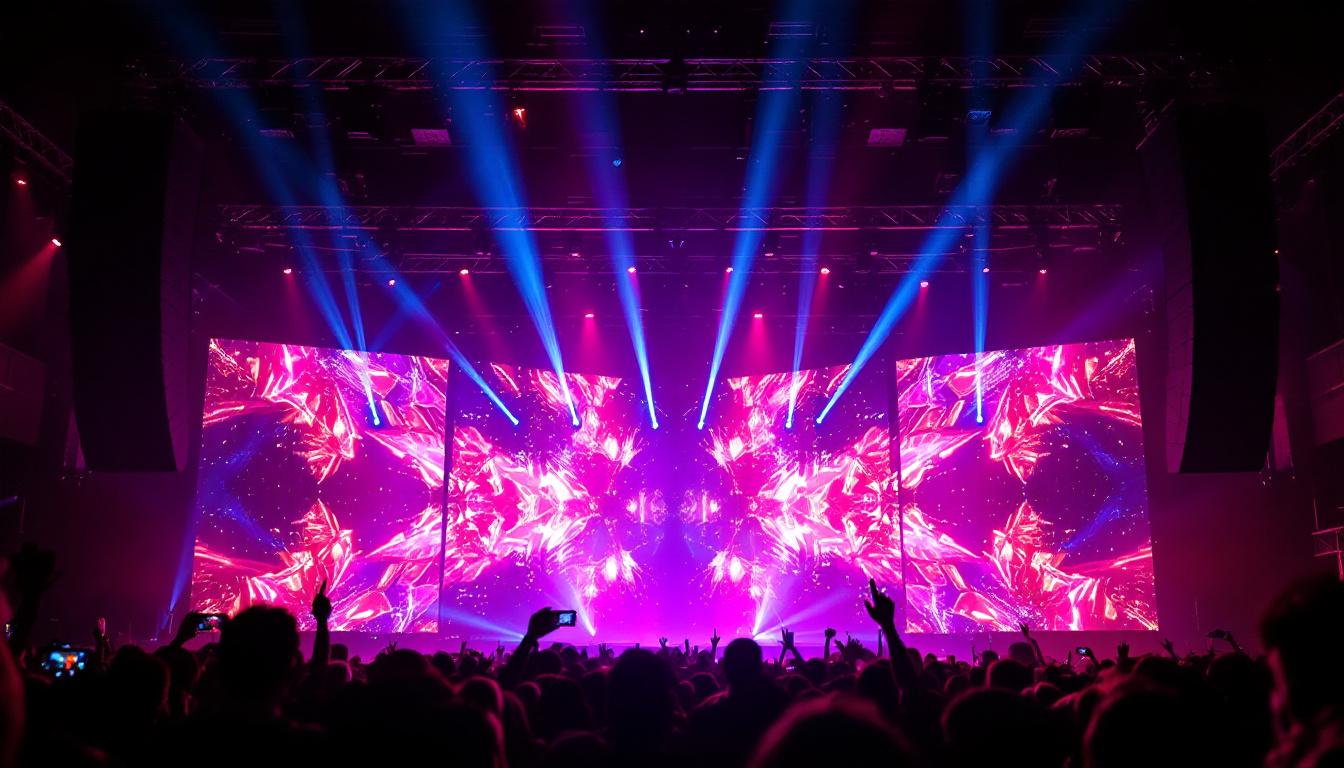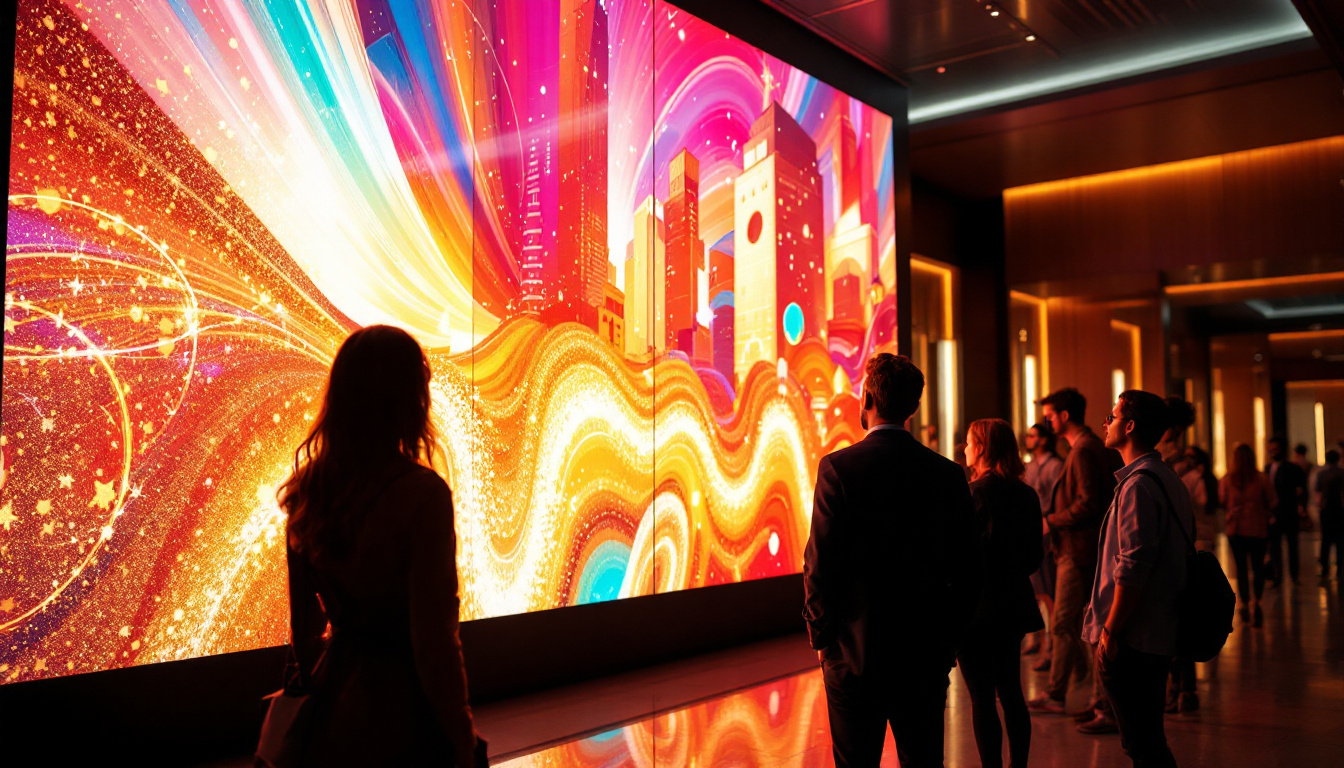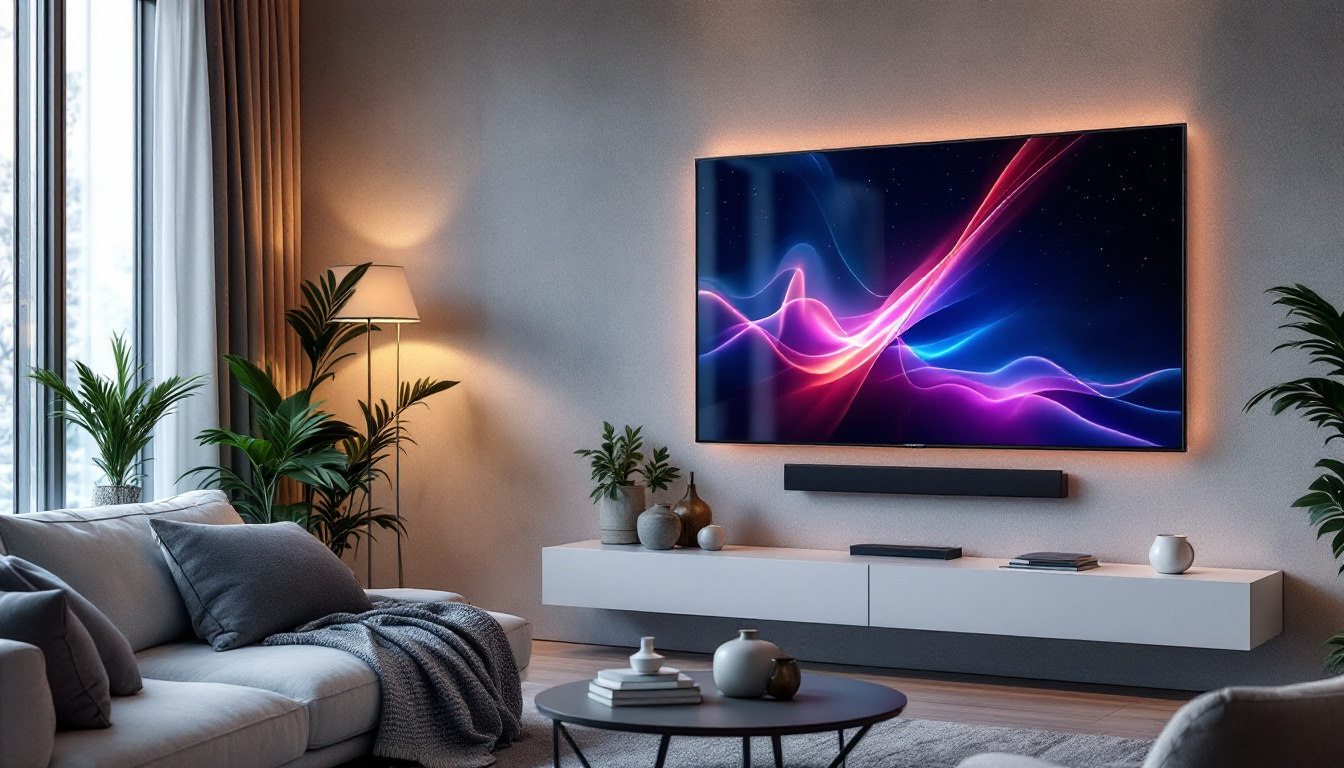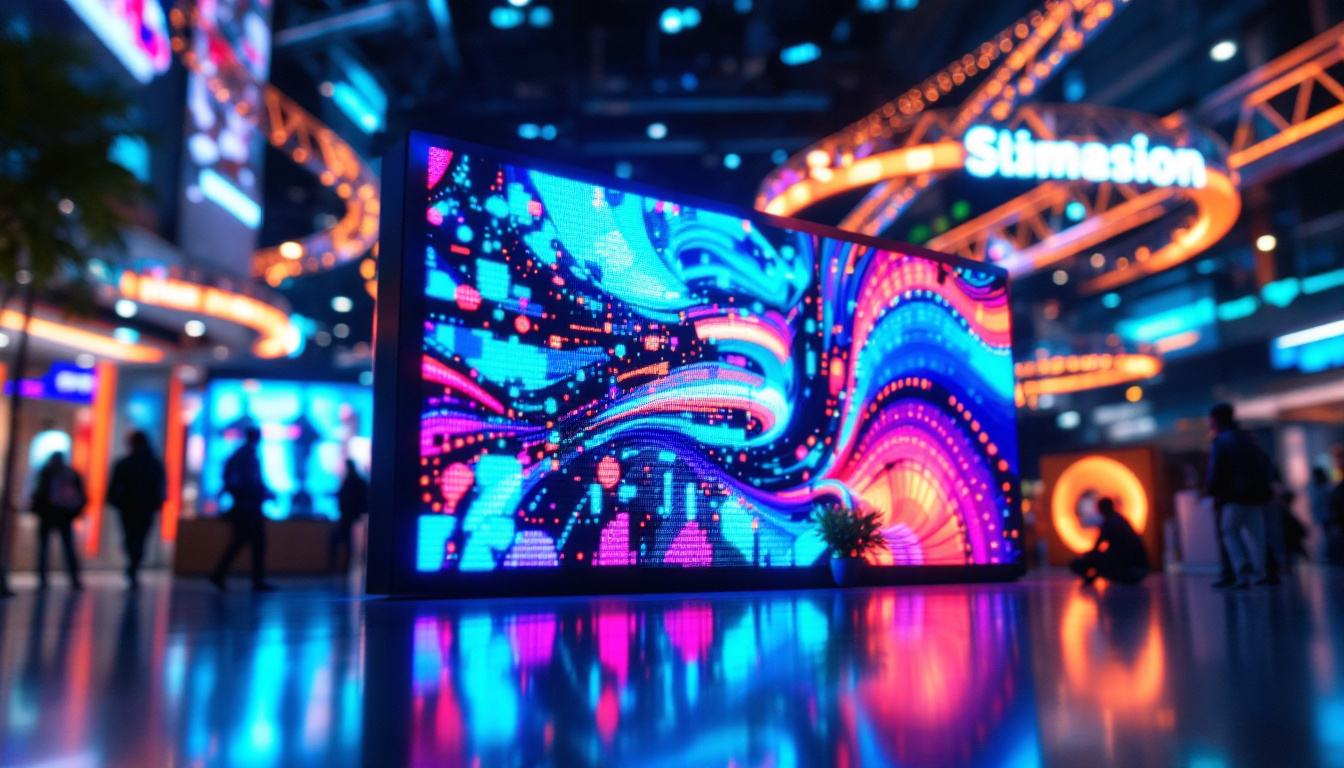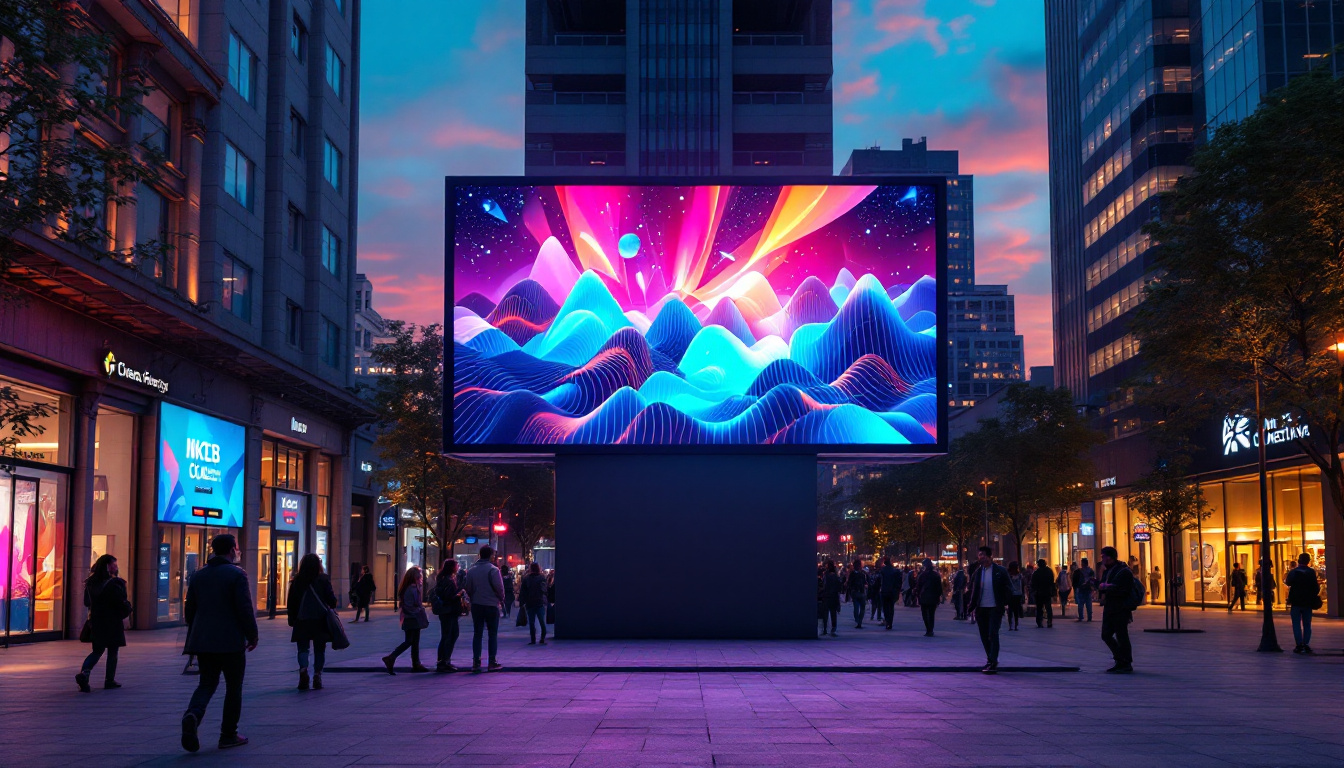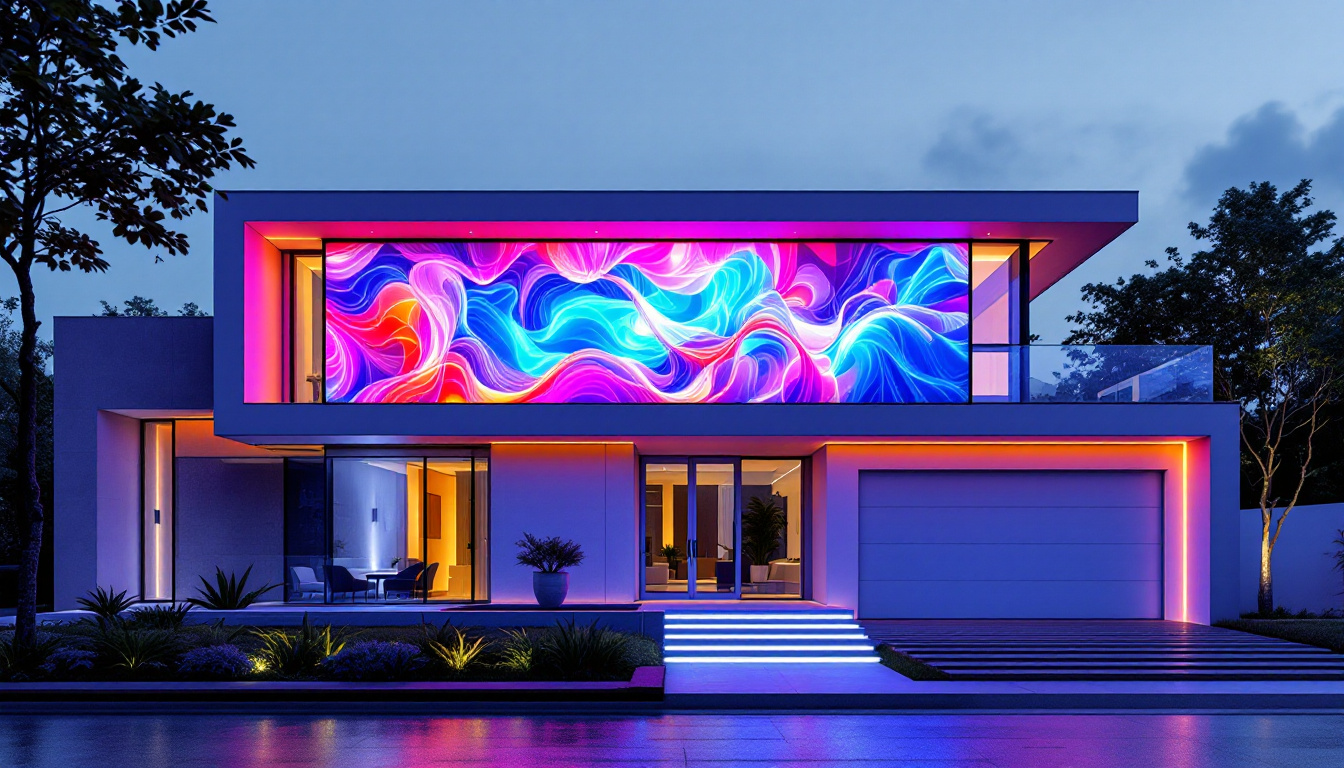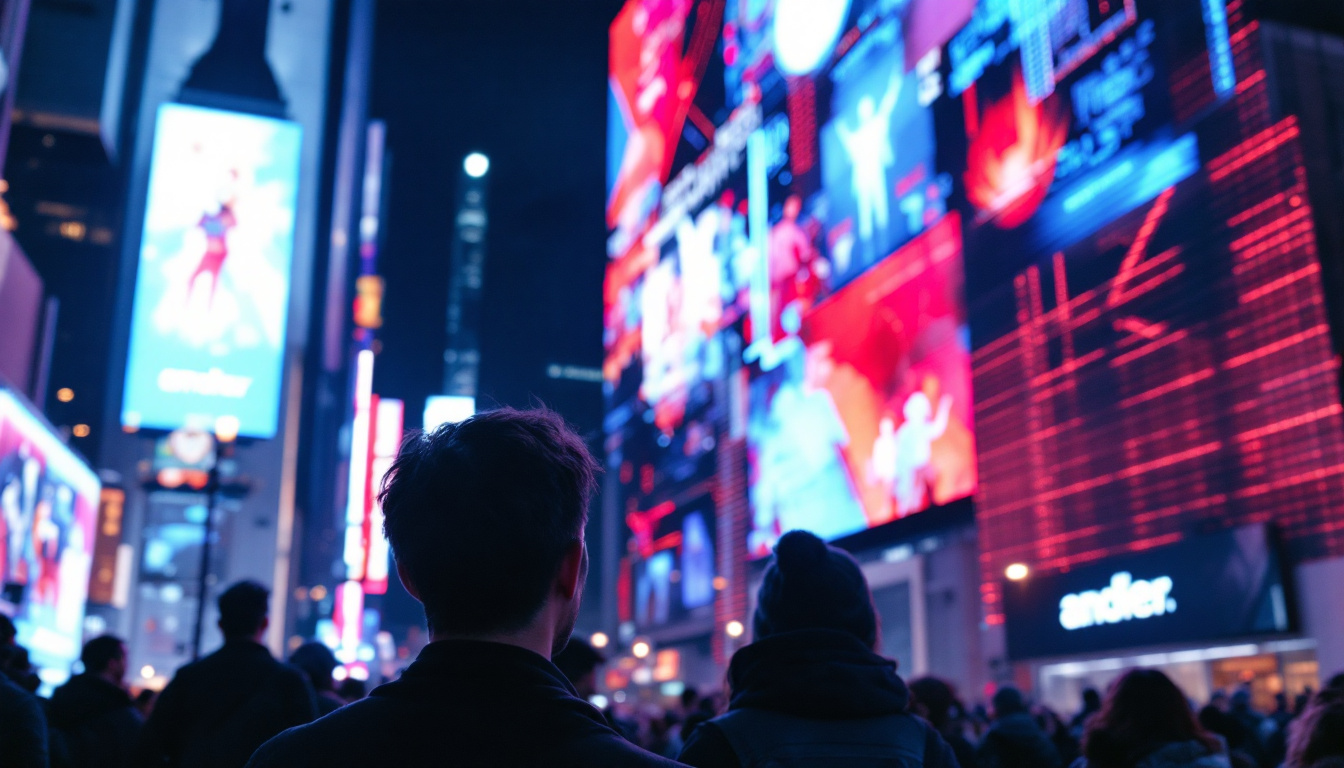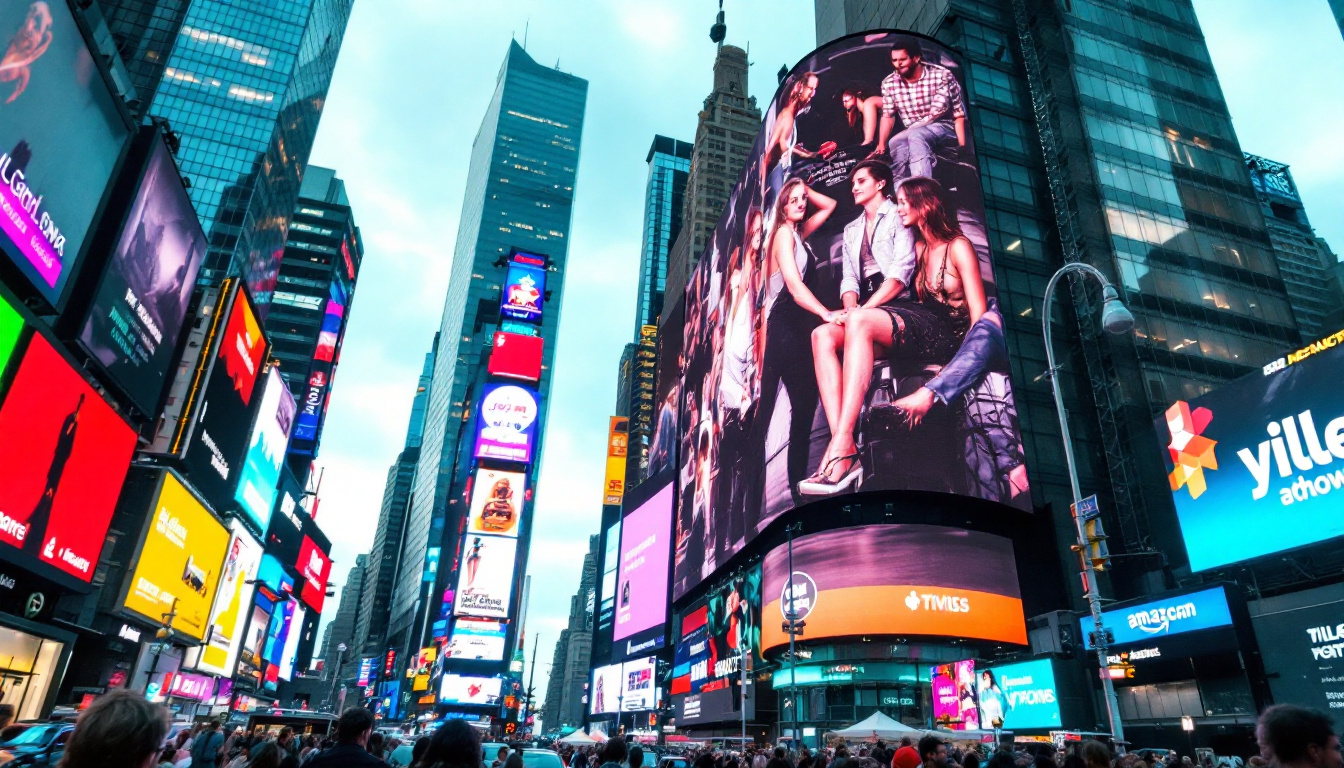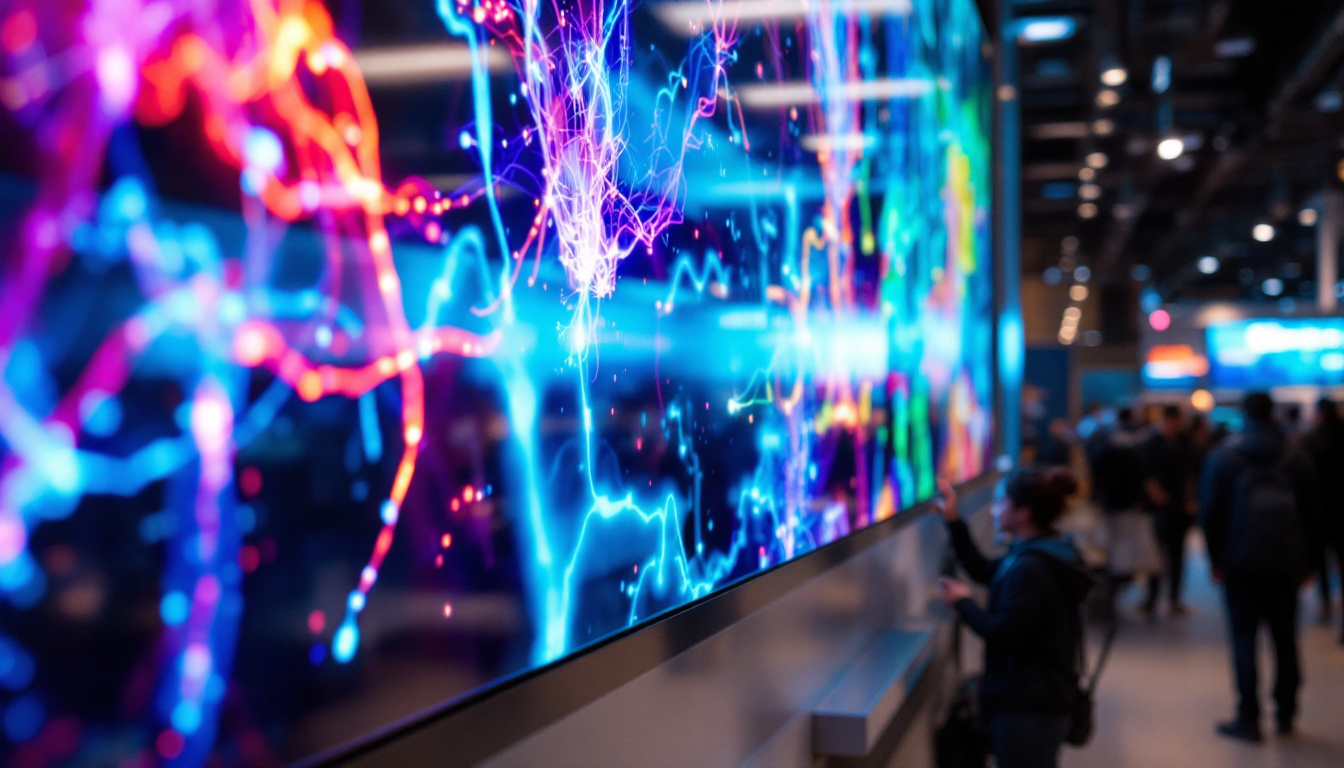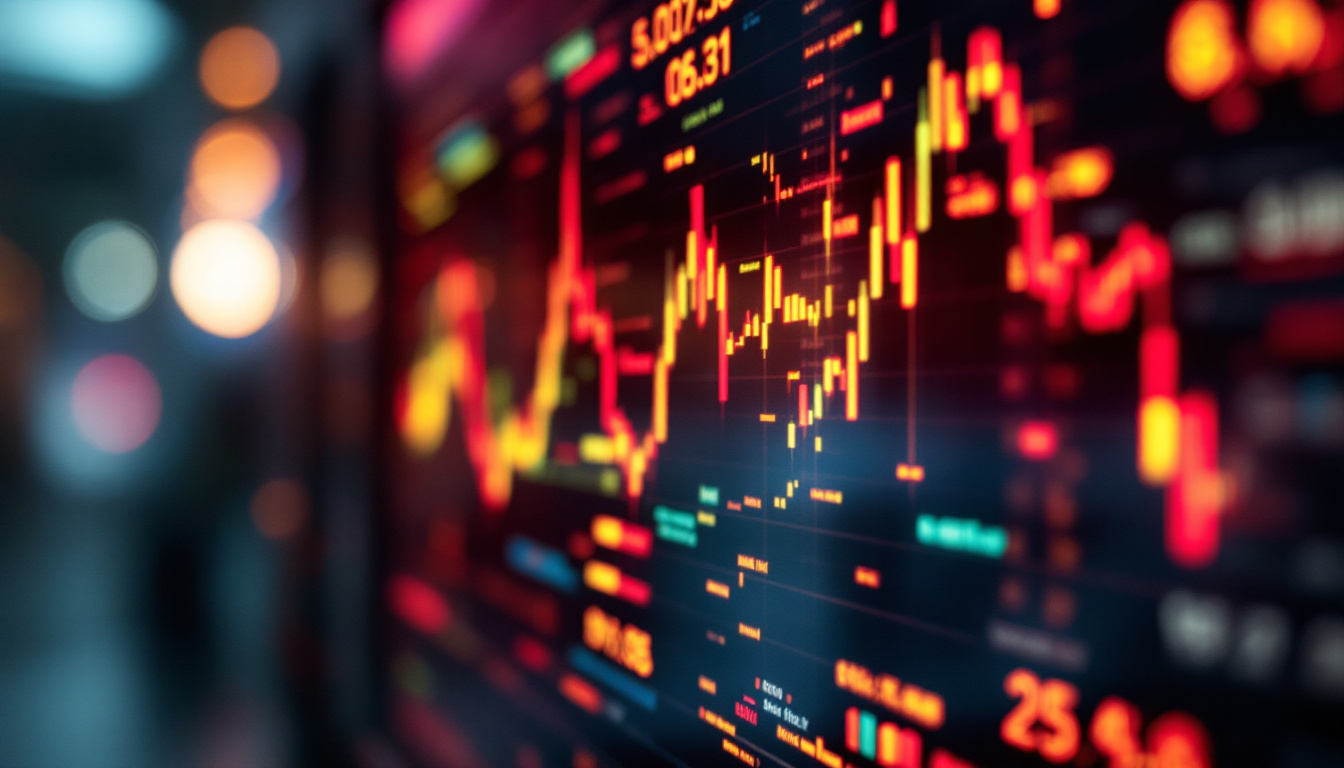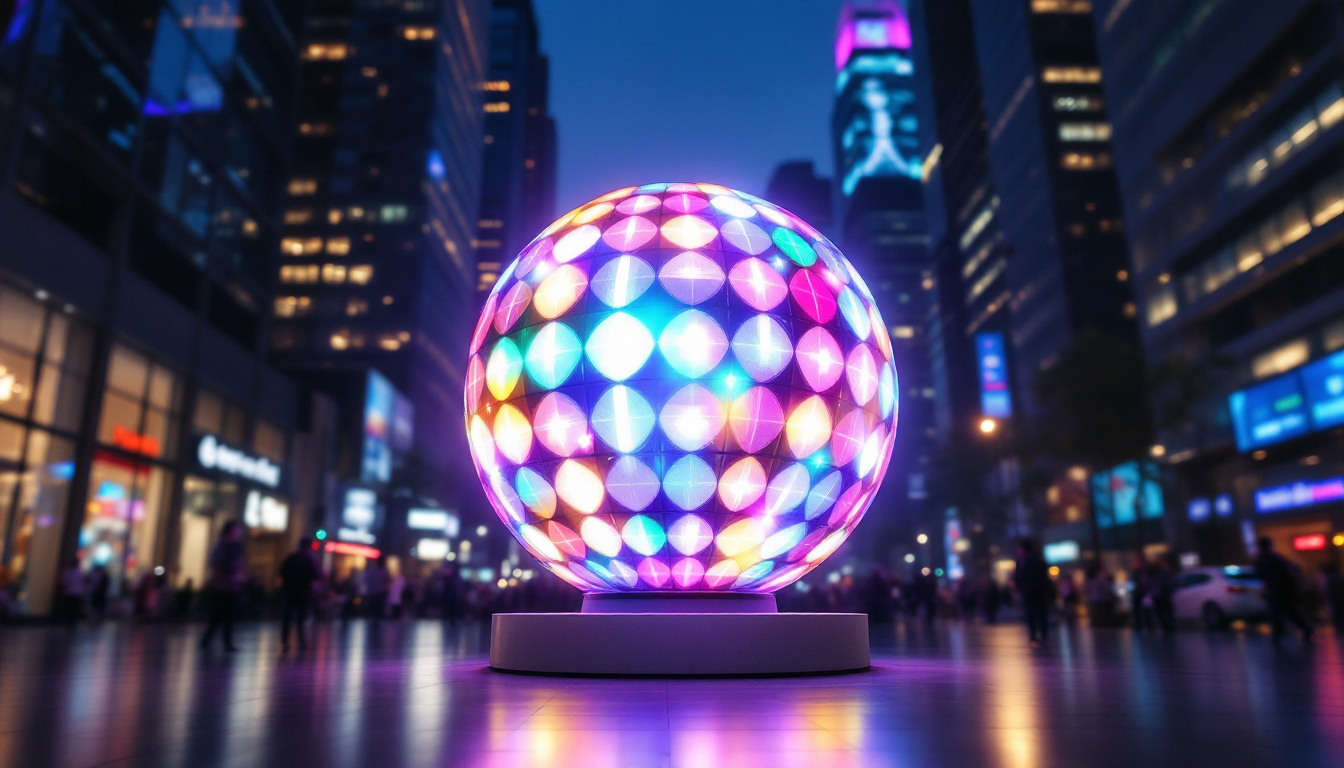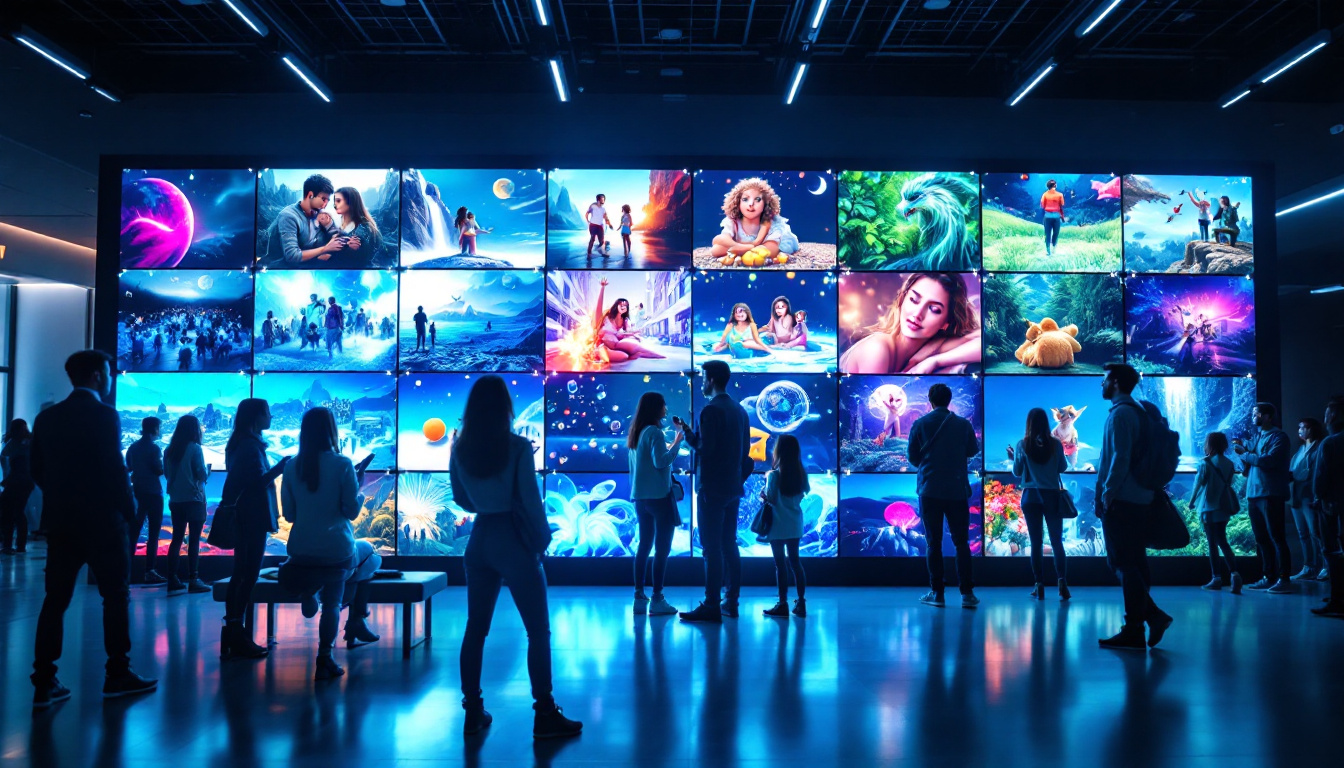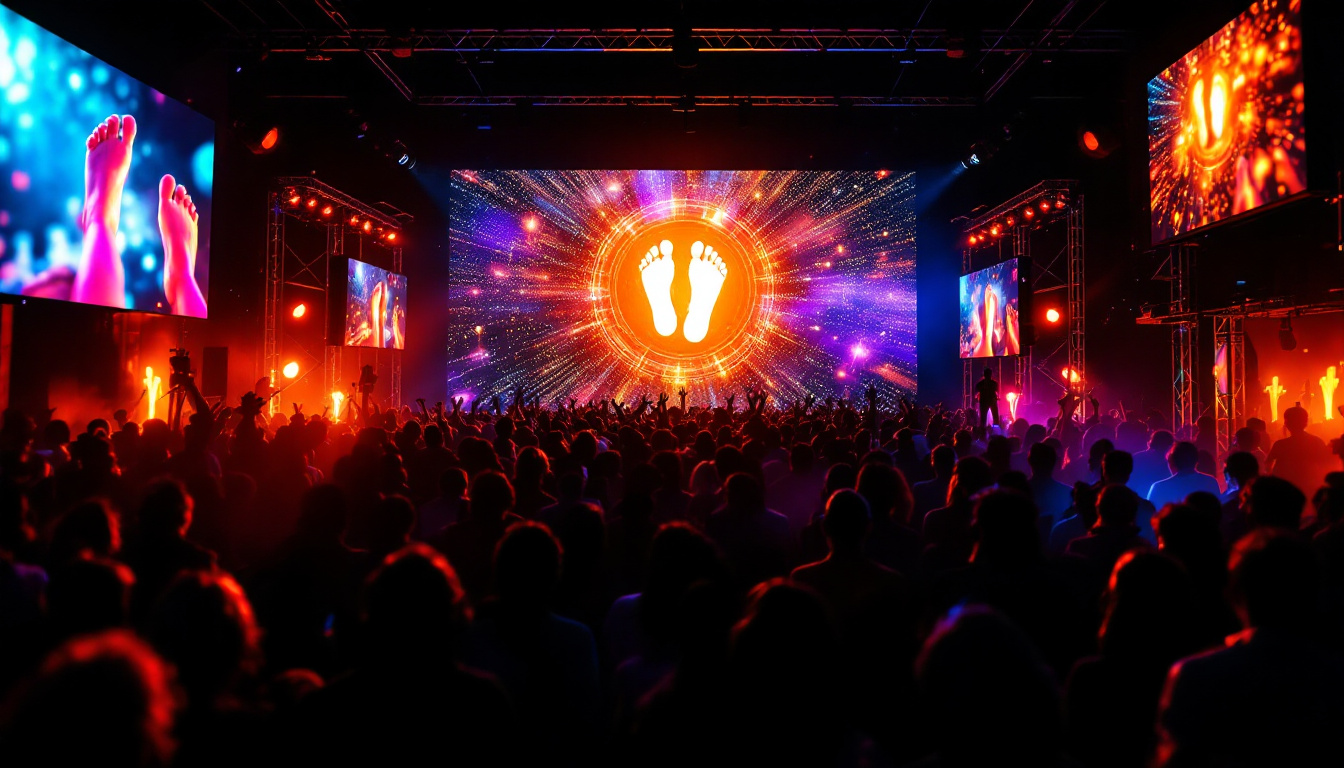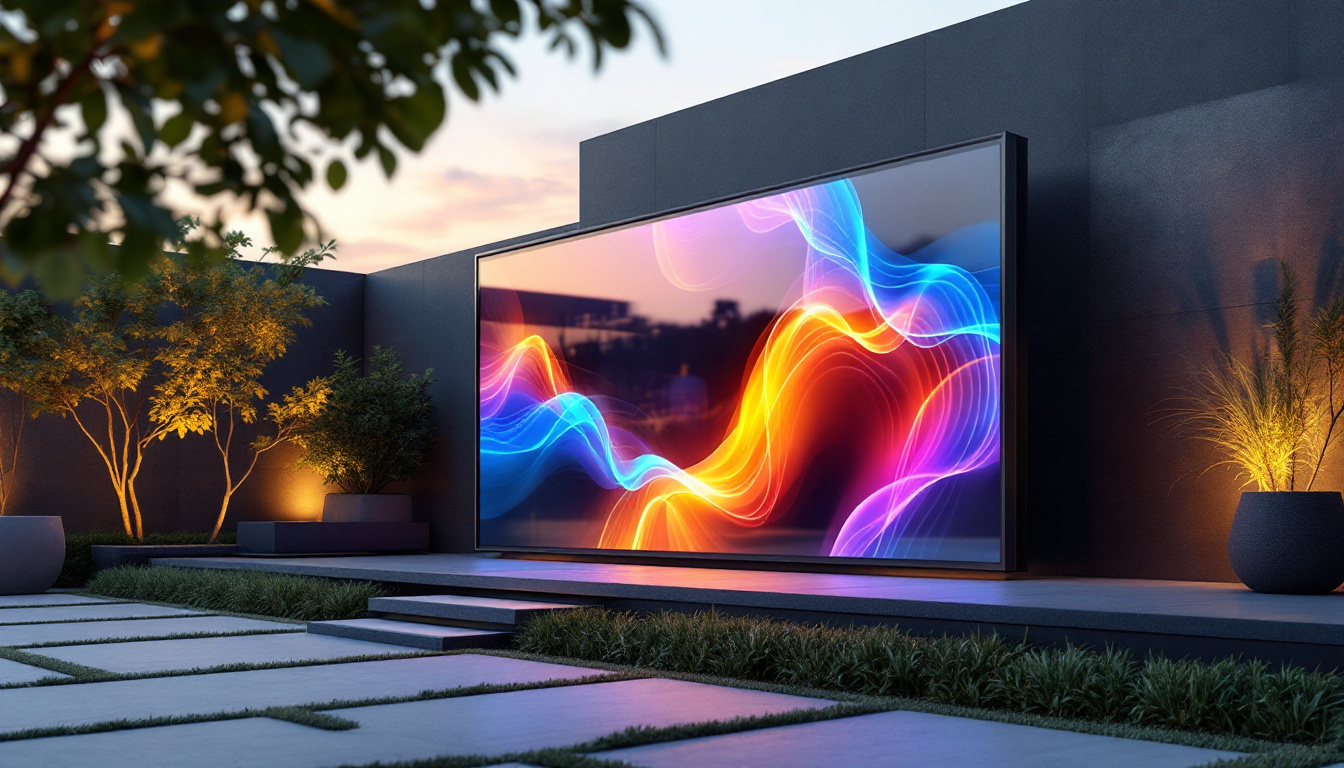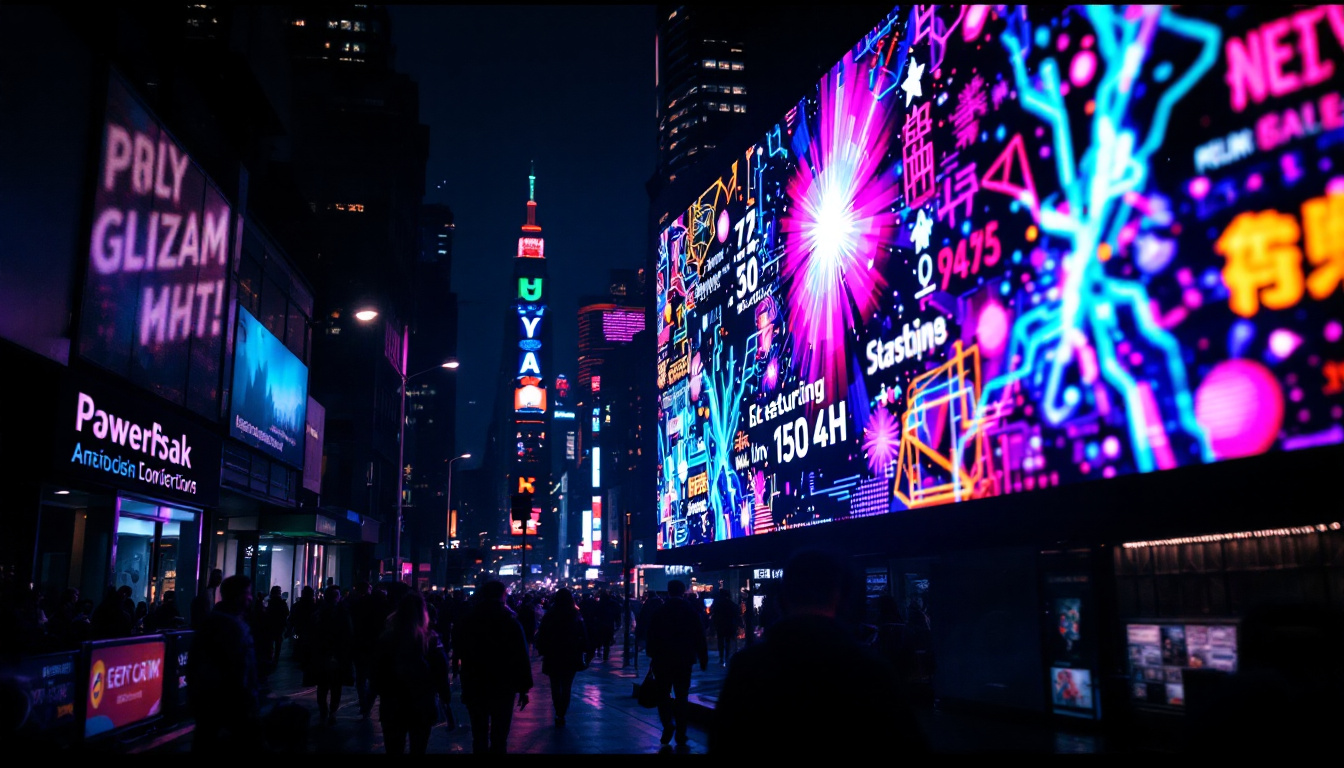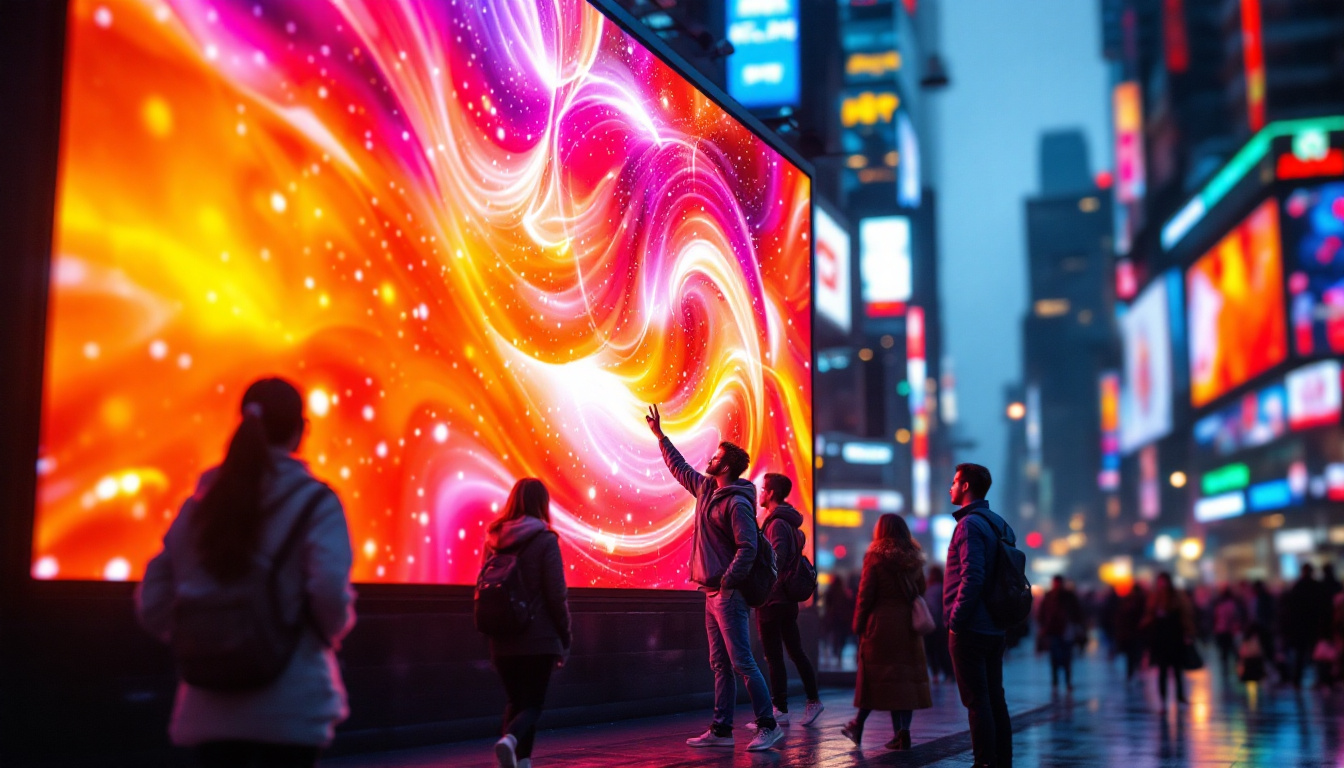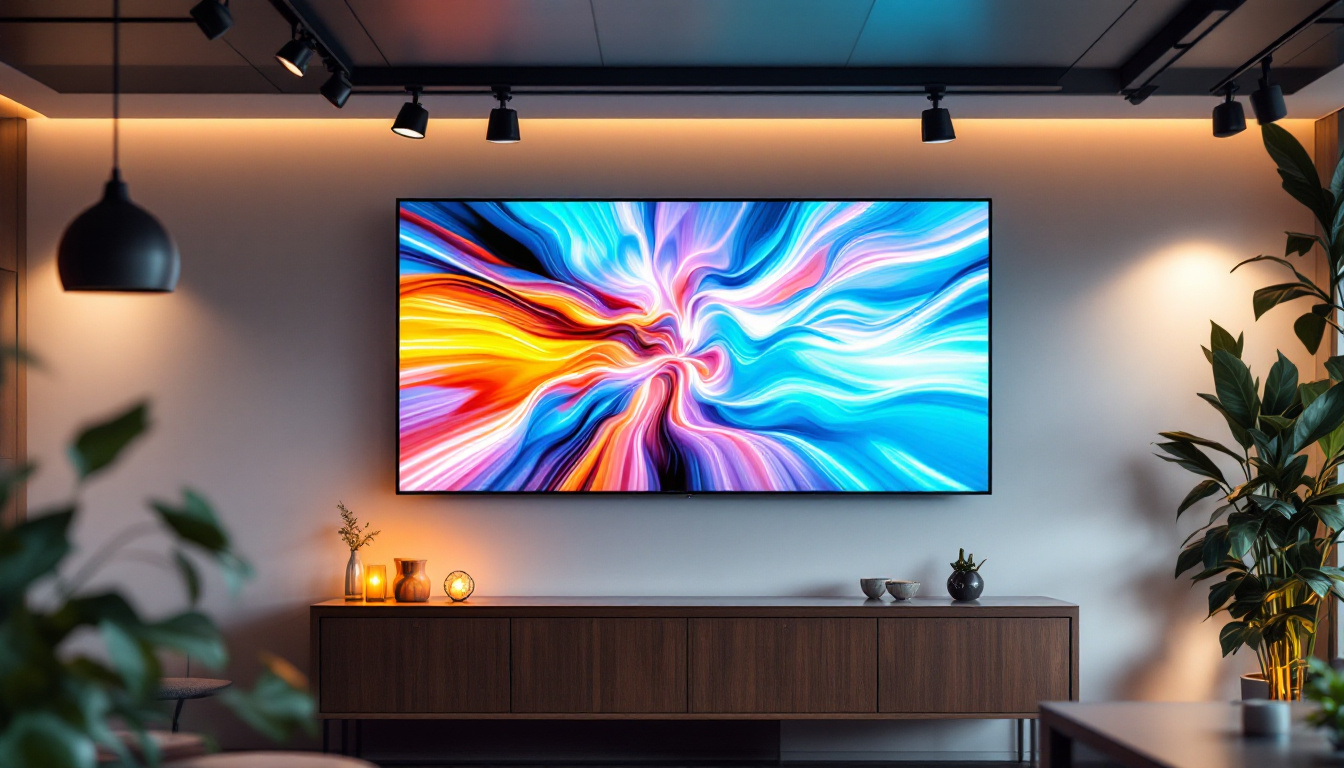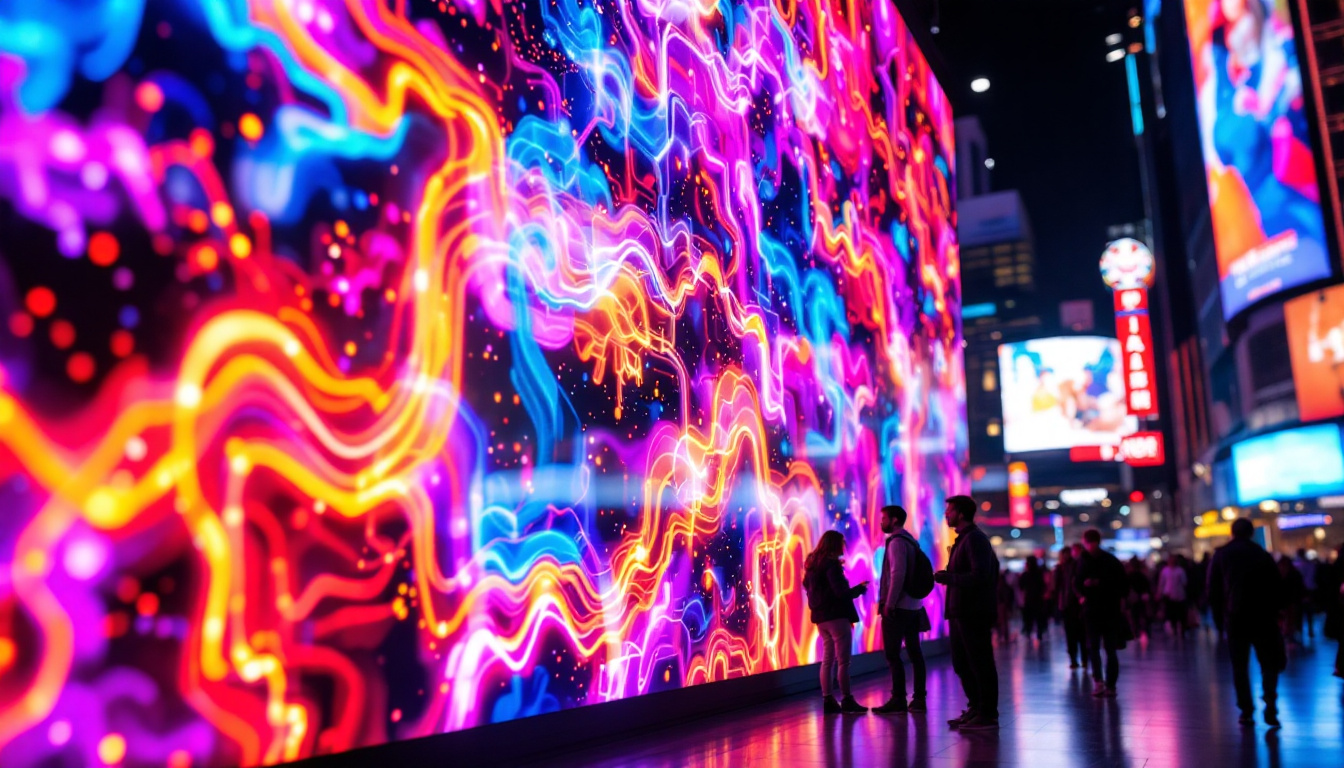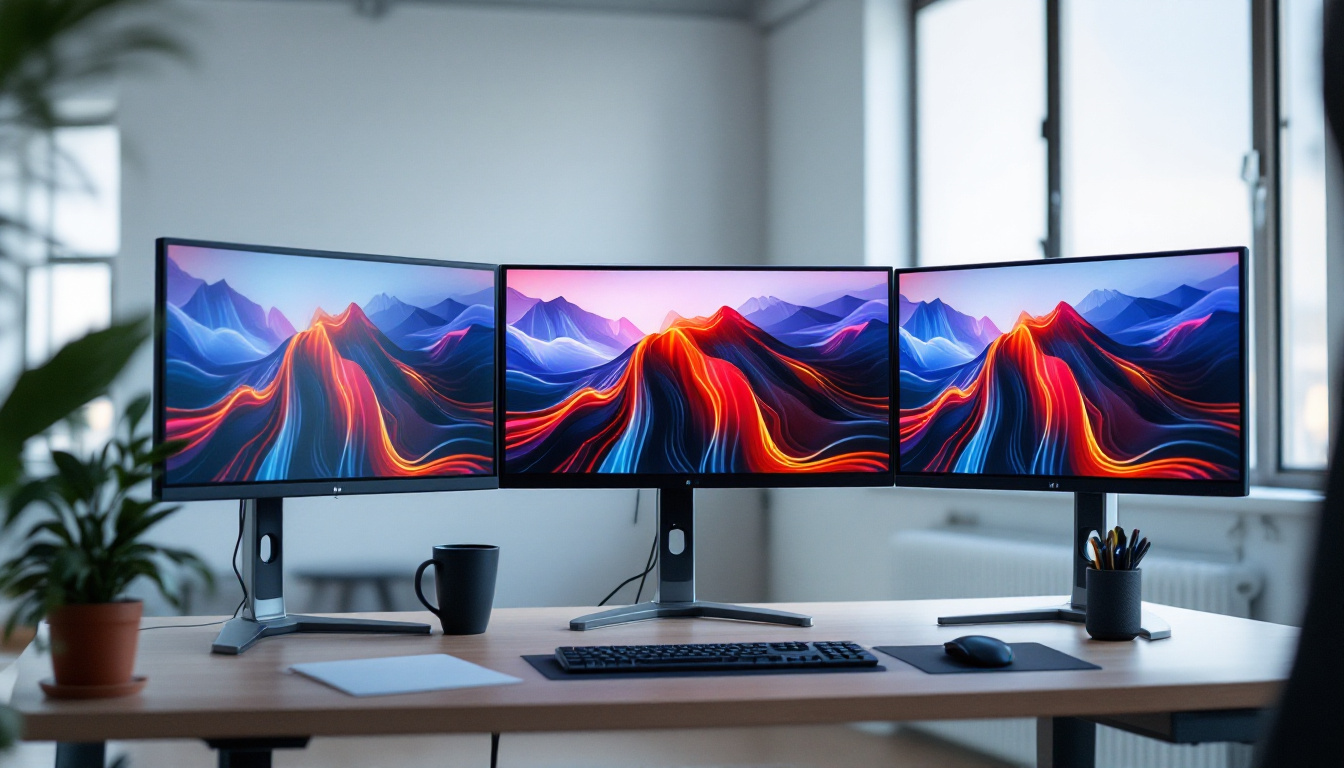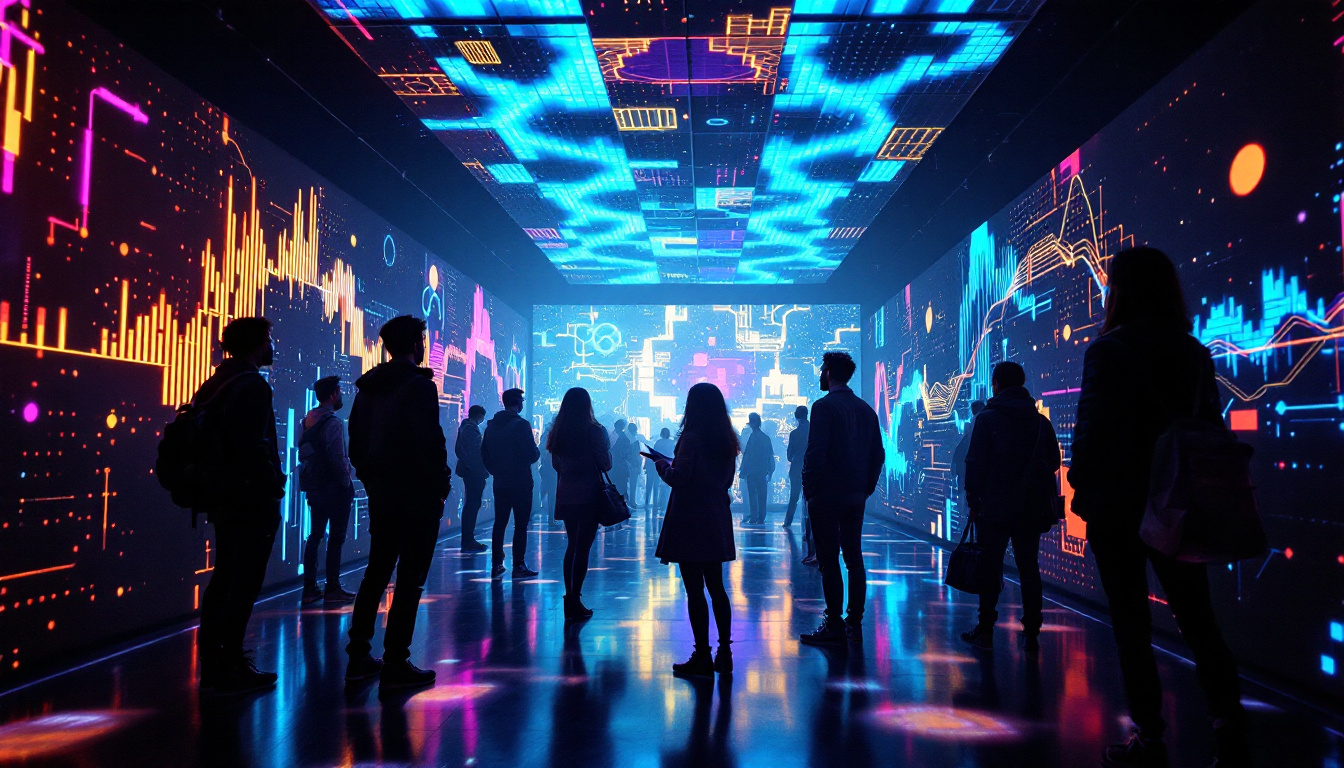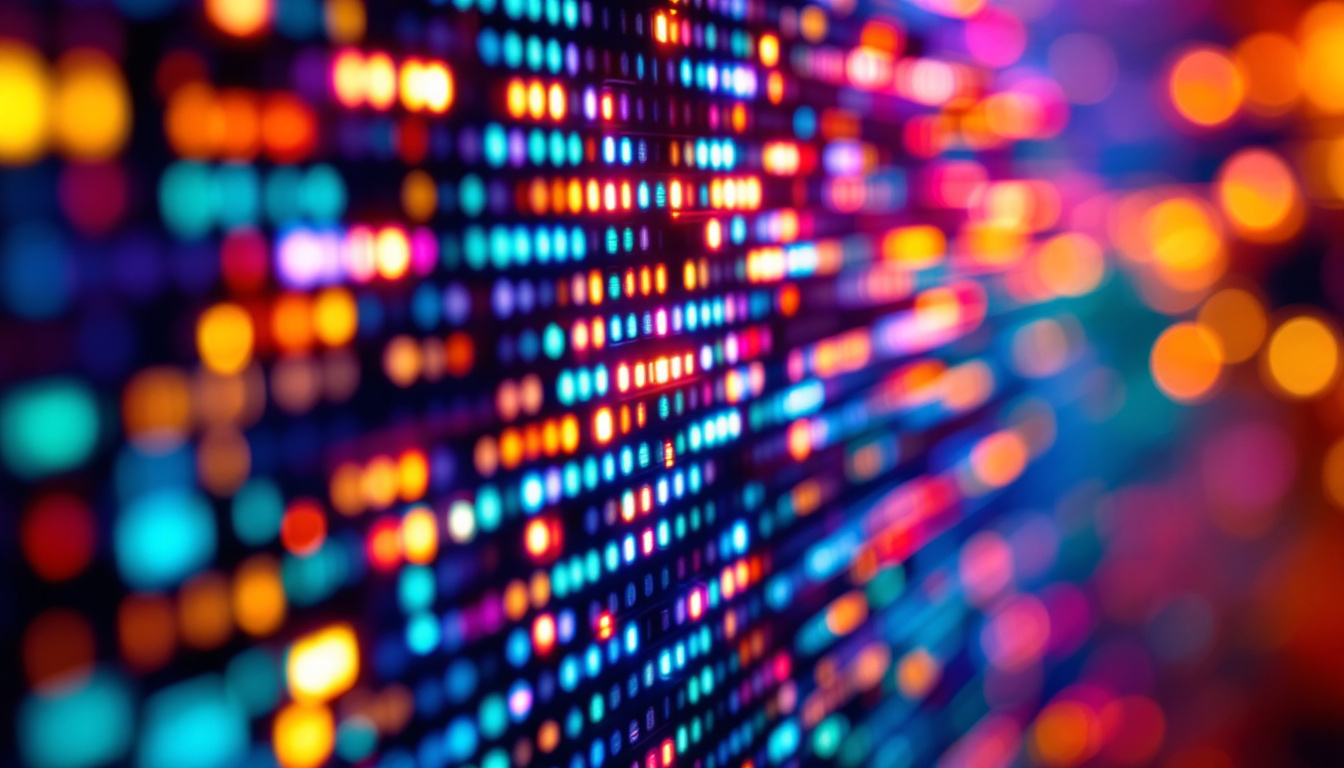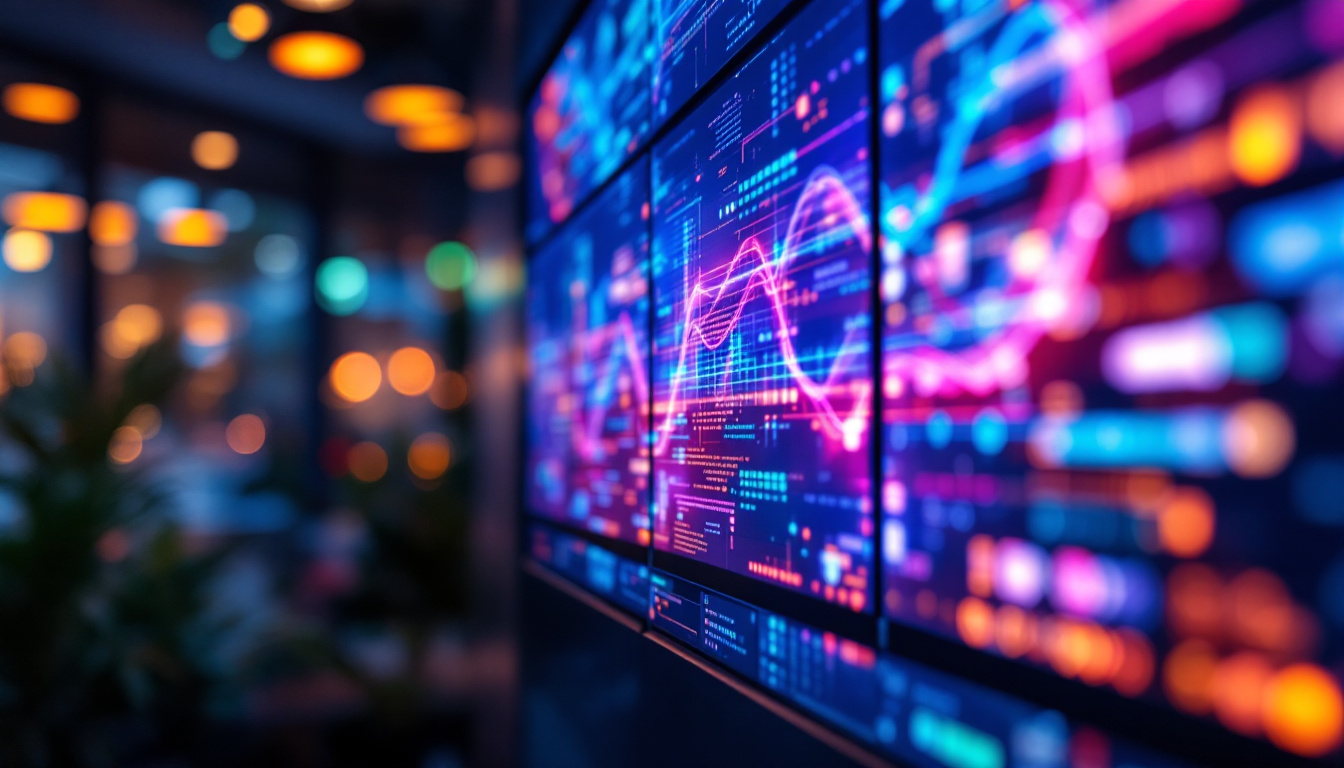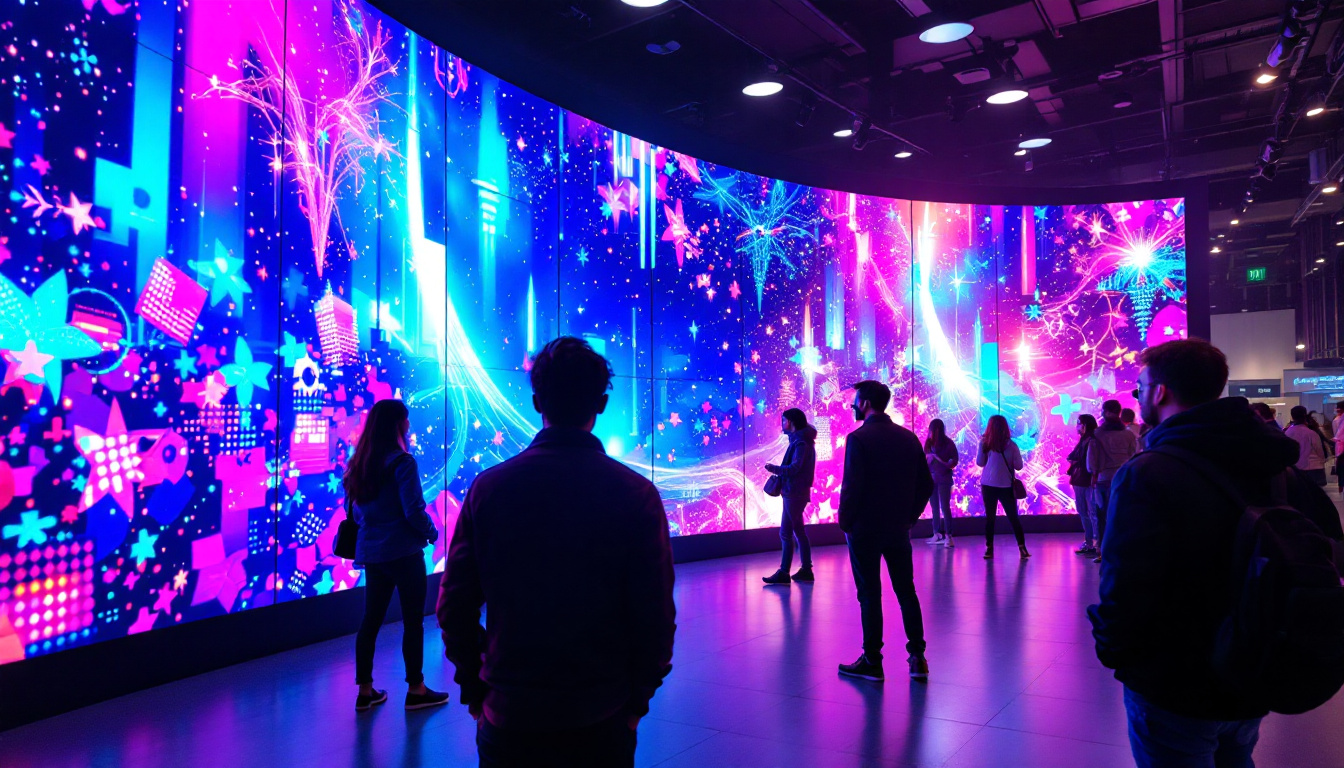In today’s digital world, LED displays have become an integral part of our everyday experiences. From advertising billboards to sports arenas, these vibrant screens capture attention and convey messages effectively. However, the technology behind LED displays is often misunderstood. This article aims to provide a comprehensive overview of Luminate Data and how LED displays function, their applications, and their benefits.
Understanding LED Technology
Light Emitting Diodes (LEDs) are semiconductor devices that emit light when an electric current passes through them. This technology has revolutionized the way we think about displays, offering numerous advantages over traditional lighting methods. The fundamental principle behind LEDs is relatively simple, yet the implications are profound.
The Science Behind LEDs
At the core of LED technology lies the p-n junction, where two types of semiconductor materials meet. When electricity flows through this junction, electrons recombine with holes, releasing energy in the form of photons—this is the light we see. The color of the light emitted depends on the materials used in the semiconductor, which can be adjusted to create a wide spectrum of colors.
LEDs are known for their efficiency. Unlike incandescent bulbs, which convert a significant portion of energy into heat, LEDs convert most of their energy directly into light. This efficiency not only reduces energy consumption but also extends the lifespan of the display, making it a cost-effective solution for various applications. In fact, many LED lights can last up to 25,000 hours or more, significantly outpacing traditional bulbs, which typically last around 1,000 hours. This longevity translates to fewer replacements and less waste, contributing to a more sustainable approach to lighting.
Types of LED Displays
LED displays come in several types, each suited for different applications. The most common types include:
- Direct View LED Displays: These displays use individual LEDs to create images and are often used in outdoor advertising.
- LED Backlit Displays: These are LCD screens that use LEDs as a backlight, providing better contrast and color accuracy.
- Organic LED (OLED) Displays: Utilizing organic compounds, these displays offer superior color and contrast, making them popular in high-end televisions and smartphones.
In addition to these common types, there are also specialized LED displays designed for niche markets. For instance, MicroLED technology is emerging as a competitor to OLED, offering even finer pixel density and brightness without the risk of burn-in that can affect OLED screens. Furthermore, LED technology is being integrated into innovative applications such as automotive lighting, where adaptive headlights can adjust brightness and direction based on driving conditions, enhancing safety and visibility on the road. As research continues to advance, we can expect even more groundbreaking uses for LED technology across various industries.
Applications of LED Displays
LED displays have found their way into various sectors, transforming how information is communicated. Their versatility and effectiveness make them ideal for numerous applications.
Advertising and Marketing
One of the most prominent uses of LED displays is in advertising. Billboards and digital signage leverage the bright and dynamic nature of LEDs to capture consumer attention. With the ability to change content quickly, businesses can display promotions, announcements, and advertisements in real-time, optimizing their marketing strategies.
Moreover, the high visibility of LED displays, even in daylight, ensures that messages reach a broad audience. This adaptability allows marketers to tailor their content based on the time of day, weather conditions, or specific events, enhancing engagement and effectiveness. In addition to traditional advertising, LED displays are increasingly being used in interactive campaigns, where consumers can engage with the content through their smartphones or other devices, creating a two-way communication channel that fosters deeper connections with brands.
Entertainment and Events
In the entertainment industry, LED displays play a crucial role in enhancing the audience experience. Concerts, sports events, and theater productions utilize large LED screens to provide visuals that complement performances. These displays can show live feeds, graphics, and animations, creating an immersive environment for attendees.
Furthermore, the flexibility of LED technology allows for creative designs, such as curved or transparent displays, which can be integrated into stage designs or architectural elements. This innovation opens up new possibilities for artistic expression and audience interaction. For instance, during live performances, LED screens can be programmed to react to the music, creating a synchronized light show that captivates the audience. Additionally, the use of LED displays in festivals and public events has become commonplace, providing not only entertainment but also essential information such as schedules, safety instructions, and emergency alerts.
Transportation and Navigation
LED displays are also widely used in transportation systems. From airport arrival and departure boards to digital signage in train stations, these displays provide real-time information to travelers. Their energy efficiency and durability make them suitable for environments that require constant operation.
Additionally, LED displays in vehicles, such as buses and taxis, enhance passenger information systems. By providing clear and dynamic updates, they improve the overall travel experience and ensure that passengers are well-informed. Beyond just schedules, these displays can also showcase advertisements or local attractions, turning mundane travel time into an opportunity for engagement. Furthermore, advancements in technology have led to the integration of LED displays with GPS systems, allowing for real-time updates on traffic conditions and route changes, which further enhances the efficiency of public transportation systems and aids in reducing congestion on the roads.
Benefits of LED Displays
The advantages of using LED displays extend beyond their visual appeal. Several key benefits contribute to their growing popularity across various industries.
Energy Efficiency
One of the most significant benefits of LED displays is their energy efficiency. Compared to traditional display technologies, LEDs consume significantly less power, which translates into lower operational costs. This efficiency not only benefits businesses financially but also contributes to environmental sustainability by reducing overall energy consumption.
Longevity and Durability
LED displays are designed to last. With a lifespan that can exceed 100,000 hours, they outlast traditional lighting options, reducing the need for frequent replacements. This durability makes them ideal for both indoor and outdoor applications, where they can withstand harsh weather conditions without compromising performance.
Moreover, the robust construction of LED displays means they are less susceptible to damage from impacts or vibrations, further enhancing their longevity. This resilience is particularly valuable in high-traffic areas or during events where equipment is frequently moved or adjusted.
High-Quality Visuals
LED displays are known for their exceptional visual quality. They offer high brightness levels, vibrant colors, and excellent contrast ratios, ensuring that content is displayed clearly and attractively. This quality is especially important in environments where visibility is paramount, such as outdoor advertising or live events.
Furthermore, advancements in LED technology have led to improved pixel density, allowing for higher resolution displays. This enhancement enables the creation of stunning visuals that can captivate audiences and convey messages more effectively.
Challenges and Considerations
While LED displays offer numerous benefits, they are not without challenges. Understanding these challenges is crucial for making informed decisions regarding their implementation.
Initial Costs
One of the primary considerations when investing in LED displays is the initial cost. Although prices have decreased over the years, high-quality LED displays can still represent a significant investment. Businesses must weigh this upfront cost against the long-term savings associated with energy efficiency and durability.
Additionally, the cost of installation and maintenance should be factored into the overall budget. Partnering with experienced professionals can help mitigate these costs and ensure that the installation process is smooth and efficient.
Technical Expertise
Implementing LED displays often requires a certain level of technical expertise. From installation to content management, businesses may need to invest in training or hire skilled personnel to operate and maintain these systems effectively. This requirement can pose a challenge for smaller organizations with limited resources.
Moreover, as technology continues to evolve, keeping up with the latest advancements in LED display technology may necessitate ongoing education and training for staff. This investment in knowledge is essential for maximizing the benefits of LED displays.
The Future of LED Displays
The future of LED displays looks promising, with ongoing advancements in technology and applications. As industries continue to explore innovative uses for LED displays, several trends are emerging.
Smart Displays
With the rise of the Internet of Things (IoT), smart LED displays are becoming increasingly common. These displays can connect to the internet and other devices, allowing for real-time data integration and interactivity. Businesses can leverage this technology to create personalized experiences for customers, enhancing engagement and satisfaction.
For instance, smart displays can be programmed to change content based on audience demographics or environmental factors, providing relevant information to viewers. This adaptability represents a significant shift in how businesses approach advertising and communication.
Sustainability Initiatives
As environmental concerns continue to grow, the demand for sustainable technologies is on the rise. LED displays are already more energy-efficient than traditional options, but manufacturers are exploring additional ways to reduce their environmental impact. This includes using recyclable materials in production and developing displays that consume even less energy.
Furthermore, integrating renewable energy sources, such as solar power, into LED display systems can further enhance sustainability efforts. This trend aligns with the broader movement toward eco-friendly practices across various industries.
Conclusion
LED displays have transformed the way information is presented and consumed across various sectors. Their energy efficiency, longevity, and high-quality visuals make them an attractive option for businesses looking to enhance their communication strategies. While challenges such as initial costs and technical expertise exist, the benefits far outweigh these considerations.
As technology continues to advance, the future of LED displays promises even more innovative applications and sustainable practices. Embracing this technology can lead to improved customer engagement and a more effective way to convey messages in an increasingly digital world.
Discover LumenMatrix LED Display Solutions
Ready to elevate your visual communication strategy with cutting-edge LED technology? Explore LumenMatrix’s comprehensive range of LED display modules, from vibrant Indoor and Outdoor LED Wall Displays to innovative solutions like Vehicle LED Displays, LED Posters, and Custom LED Displays. Our mission is to empower your brand with displays that captivate and engage, ensuring your message resonates with clarity and impact. Check out LumenMatrix LED Display Solutions today and transform your space into a dynamic visual experience.

